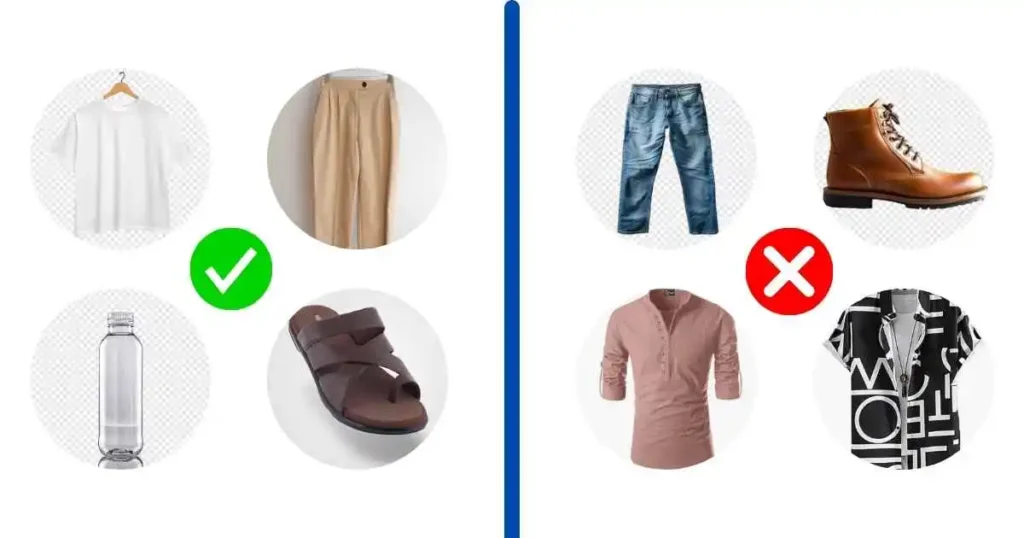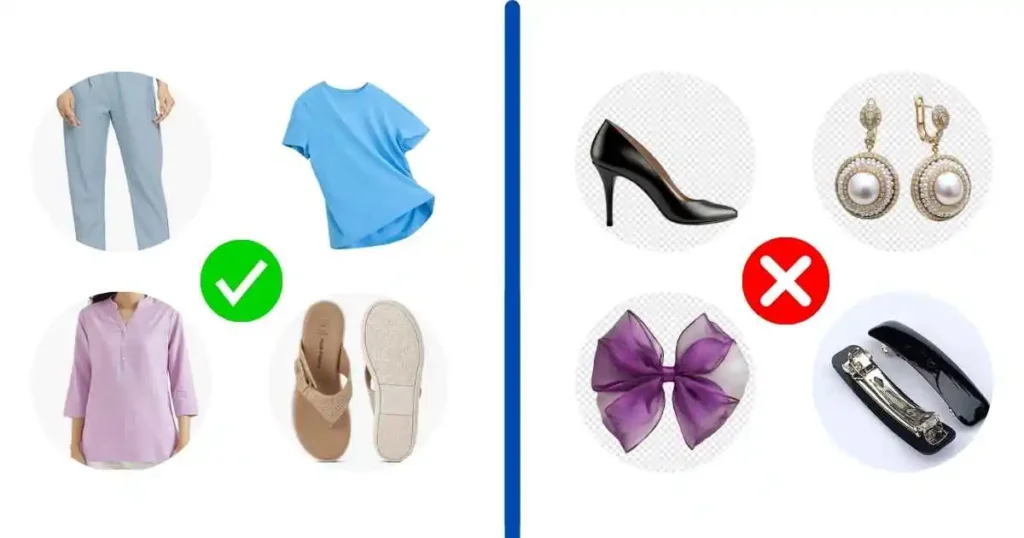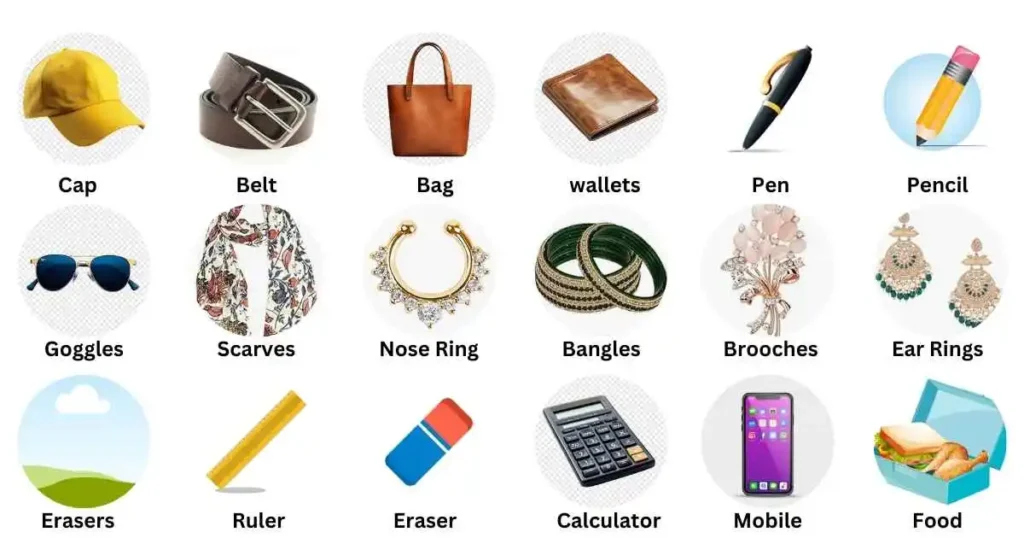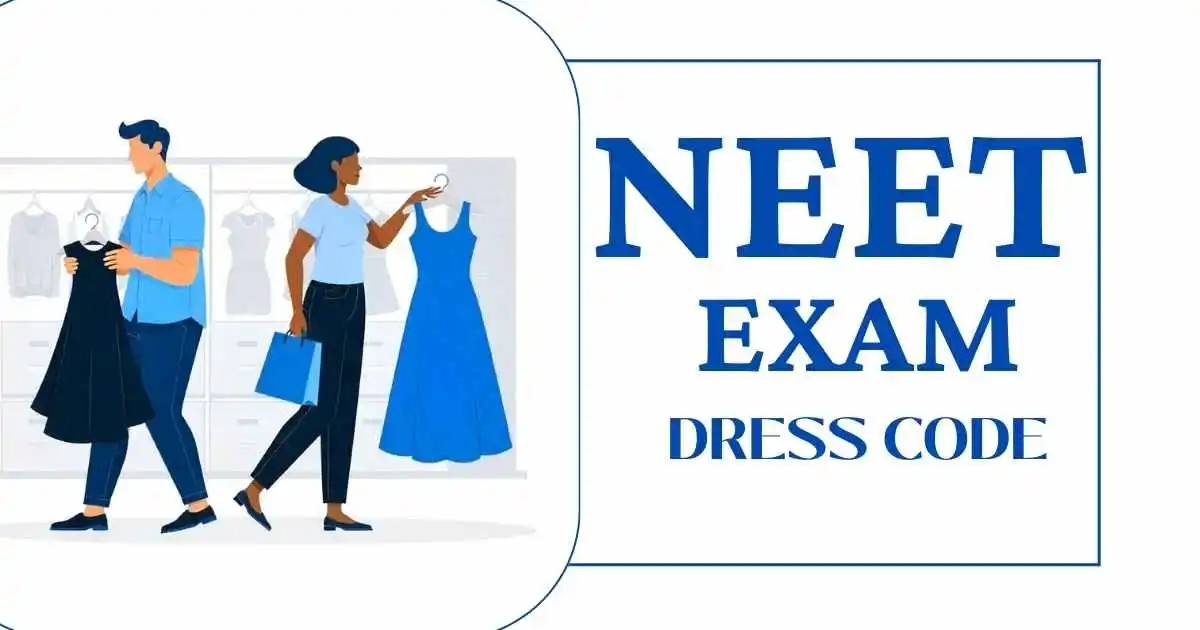Amid this intense preparation, being aware of the rules and guidelines implemented by the NTA is just as important. These guidelines are mandatory for all candidates and are strictly enforced.
Among these guidelines, dress code is one of the most important guidelines that candidates must adhere to to have a smooth exam process. Ignoring these rules could lead to unnecessary stress and, more importantly, denial of entry on the exam day.
To help you prepare comprehensively, this article will provide you with a clear understanding of the NEET exam dress code 2025.
- Importance of Understanding the NEET Exam Dress Code
- Overview of NEET Exam Day Regulations
- Things to carry at the NEET exam center
- Key Guidelines for Candidates
- Key Guidelines for Male Candidates:
- Key Guidelines for Female Candidates:
- Guidelines for Candidates Wearing Cultural or Traditional Clothing
- Key Guidelines for Candidates Wearing Cultural or Traditional Clothing
- Prohibited Clothing and Accessories for the NEET Exam
- Materials and Fabrics to Avoid
- Conclusion: NEET Exam Dress Code 2025
Importance of Understanding the NEET Exam Dress Code
The NEET dress code was introduced to ensure fairness and uniformity, minimize distractions, and prevent malpractice during the exam. Uniformity in attire fosters a conducive environment, allowing everyone to perform at their best.
The NEET dress code is designed for simple and comfortable to help candidates stay focused and undistracted throughout the test.
Overview of NEET Exam Day Regulations
- Aspirants must arrive at the exam center at least 30 minutes to 1 hour before the scheduled reporting time to negate inconvenience.
- Following the dress code is mandatory.
- No electronic devices are allowed inside the examination hall.
- Specific seats are assigned for each candidate, which will be displayed at the entrance or inside the hall.
- Candidates are expected to be calm and silent during the examination. Communicating with one another may result in disqualification.
- Candidates are not allowed to leave the hall until instructed by the invigilator.
- Stay calm and focused for a smooth exam experience.
Things to carry at the NEET exam center
As per the NEET exam day guidelines, the following is the list of items that a candidate needs to carry with them inside the examination center.
- A printout of the NEET admit card with clearly displayed details.
- The NEET admit card must be signed, and a passport-sized photograph must be affixed per instructions.
- Carry additional passport-sized photographs (same as the one uploaded during registration).
- Carry a valid document ( Aadhar card, passport, or voter ID)) for verification purposes. Avoid photocopies, as only original documents will be accepted.
Key Guidelines for Candidates

There are specific guidelines for male and female candidates to follow during the examination process. Following these rules helps candidates to avoid delays or stress during security checks.
Key Guidelines for Male Candidates:

- Clothing:
- Go for simple and light-coloured shirts or T-shirts with half sleeves. Avoid oversized buttons, pockets, and decorative stitching.
- Choose plain trousers or pants with minimal pockets and no zippers. Denim is not allowed.
- Footwear:
- Closed shoes or socks are not allowed. Open footwear like slippers or sandals should be worn.
- Accessories:
- Ensure you do not wear any accessories like rings, watches, bracelets, or chains.
- Bags and Electronics:
- Books, notes, and electronic devices such as mobile phones and calculators are strictly prohibited in the exam hall.
Key Guidelines for Female Candidates:

- Clothing:
- Only light-coloured, simple half-sleeved tops or kurtas are recommended. Avoid elaborate designs, embroidery, or large buttons. Full sleeves are not permitted.
- Tight-fitted leggings, palazzos, jeans, and skirts are not allowed. Instead, wear a simple salwar or trousers. Also, avoid pants with many pockets.
- Footwear:
- Only simple slippers or sandals are allowed. Closed shoes, high heels, and fancy sandals are not permitted.
- Accessories:
- Refrain from wearing any accessories. Earrings, rings, chains, watches, bangles, or anklets are all exempted in the exam hall.
- Hair accessories such as hairpins, clips, artificial hair extensions, embellishments, scrunchies, and metallic items should be avoided.
- Bags and Electronics:
- No bags are allowed in the exam hall. Books, notes, and electronic devices such as mobile phones and calculators are strictly prohibited.
Guidelines for Candidates Wearing Cultural or Traditional Clothing
Candidates opting for traditional and cultural attire, such as turbans, hijabs, or burqas, need to follow certain rules while appearing for the NEET examination. Such candidates have to mention their customary dress while filling out the NEET application form.
These rules are implemented to ensure the integrity and security of the NEET examination while respecting individual cultures. In accordance with the guidelines issued by the NEET, applicants wearing such attire are expected to report at least an hour before the reporting time so that they can clear the security checks without any inconvenience.
Key Guidelines for Candidates Wearing Cultural or Traditional Clothing
- Sikh candidates are permitted to wear kirpan, Kada, and kangha.
- Female candidates can wear Hijab or burqa. The face mask should be plain without any patterns or logos.
- Traditional attire should be simple. Avoid wearing large buttons, metallic items, or accessories. Extravagant designs, heavy embellishments, and bright colours are not allowed.
Prohibited Clothing and Accessories for the NEET Exam

- Any form of ornament like brooches, earrings, nose pins, bangles
- Accessories like scarves, shawls, goggles, caps, bags, belts, and wallets.
- Stationery items like pens, pencils, erasers, and rulers.
- Electronic gadgets such as mobile phones, smart watches, calculators.
- Any study materials, notes, or books.
- Food or snacks in the exam hall are not permitted except for candidates with specific health conditions.
Materials and Fabrics to Avoid
- Oversized or tight-fitted clothes. The attire should be well-fitted.
- Flashy colours or intricate designs of clothing with embroidery.
- Leather, thick wool, or heavy synthetic materials.
- Shiny or metallic clothing.
- Multiple Layers like jackets or cardigans
- Cloths with unnecessary pockets or hidden compartments.
Conclusion: NEET Exam Dress Code 2025
Understanding the NEET guidelines beforehand will provide a seamless and stress-free experience for all candidates. These rules are made to ensure that the examination environment remains focused and decorum is maintained.
Candidates violating the NEET exam dress code will be disqualified. They will lose the opportunity to take the exam and pursue their dreams of a career in healthcare.











